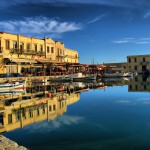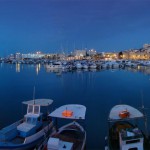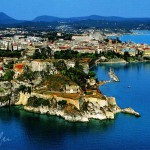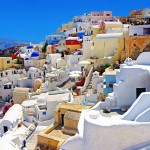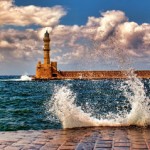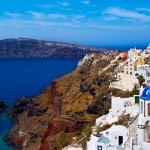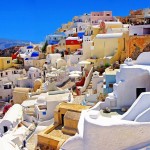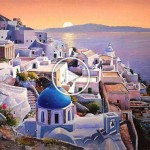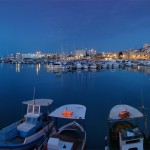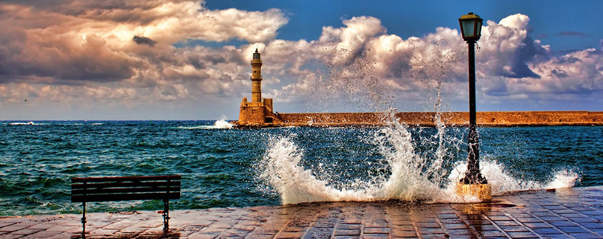
“Venice of the East”, Chania is the most picturesque city of Crete and one the most beautiful cities in Greece. It is the “greenest” city in Crete as it has more rainfall than any other place in Crete.
Chania is the administrative capital of the prefecture and the second largest city in Crete (following Heraklion). It has a population of 54,000 people. The whole prefecture has 150,000 people. The economy of the city is based on tourism and agriculture.
We can divide Chania in the old and the new city. The old city is situated around the Old Venetian harbor and it maintains its own traditional feeling, while the new city is situated around the Venetian Walls.
A lot of important personalities were born in Chania: Eleftherios Venizelos, who was the Prime Minister of the Cretan State and Greece. He played an extremely important role in the history of the country. The awarded writers, Maro Douka and Ioanna Karystiani, the great actor Manos Katrakis and many other important people of the Arts were also born in Chania.

- Chania was first inhabited in the Neolithic Era. The city could not possibly be unaffected by the Minoan Civilization (3,000 -1,000 BC).The city was built on the ruins of ancient Kydonia, one of the most important state- cities in Crete.
- During the Byzantine period, (when Chania was occupied by the Arabs) the city was called Al Hanim. When the city was reclaimed by the Byzantine emperor Nikiforos Fokas (961 AD), the city obtained the name it still has today. After 1204 AD the area was sold to the Venetians. Because of the position of the city trade and agriculture grew fast. The high commissioner of the Cretan State chose Chania to be his base. The period of the Venetian occupation of the city, although it was difficult at the beginning, helped its cultural development as the Cretan and Venetian cultures combined.
- The Ottomans occupied the city in 1645 AD. The churches were turned into mosques and all the treasures of the city were taken to Istanbul. Since 1850 the Pasha chose Chania as his residence. In 1878 when the Pact of Halepa was signed, Crete became autonomous. Last, the union with Greece was finalized in Chania, when on December 1 1913 the Greek flag was raised on the fortress Firkas.

In the Archaeological Museum of Chania, which is housed in St Francisco’s Monastery, you can see exhibits from the prehistoric times as well as the classical period. The museum, in combination with the Byzantine and Post- Byzantine collection of Chania (in Theotokopoulos street) and the Folklore Museum make the history of the city from the Neolithic Era until to date come alive. The archaeological site of Kasteli, the monuments from the Venetian period as well as the buildings that were erected during the Ottoman period complete the historic tour of the city.
In front of Firkas Fortress, the Maritime Museum of Crete includes exhibits that depict the naval history of the country and especially the history of Crete. The model of the Minoan ship is one of the most important works in the museum.
Eleftherios Venizelos’ houses that have been turned into museums are also of great interest. In the house where he was born in Mournies visitors can see photographs of personal moments and personal items from his childhood. In Halepa, there is the house where Venizelos grew and lived with his family. Last, on Prophet Ilias’ hill, you can see Eleftherios’ and Sofoklis’ Venizelos graves.
The Museum of Typography, the Chemistry Museum and the School Life Museum are also places that are worth a visit.
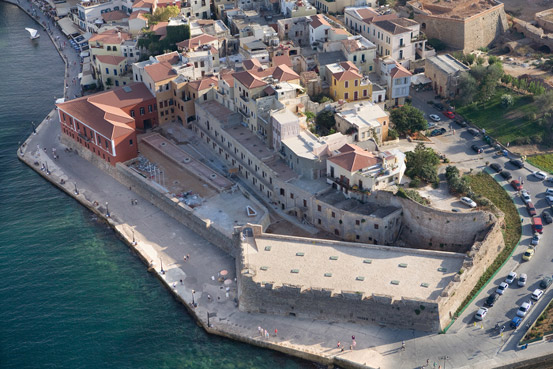
The tour of the city should begin from the old city. The cobbled streets, the narrow alleys and crossroads, the Municipal Market will take you back in time. The Venetian Walls, the picturesque Venetian harbor, the Egyptian Lighthouse, the Kioutsouk Hassan Mosque and the historical Firkas Fortress are some of the ornaments of the city.
The tour of the city should end at the aristocratic district of the Venetian town where you will be impressed by the magnificent houses of the Venetian and Turkish noble people. Passing through the Ovriaki or Evraiki (Jewish) district heading east you will find yourself in the Splantzias Square which used to be the center of the city during the Ottoman rule. On the eastern part of the square is the St Nikolaos church and on the northwestern side there is the renaissance St.Rokkos Church.
In the district Chalepas where there are amazing 19th and 20th century mansions, you will see the Prince George’s Palace, Eleftherios Venizelos Square, Venizelos’ house and the Russian church of St. Magdalini. In the round- shaped Venizelos square the statue of Eleftherios Venizelos dominates the area. Also, the Prefecture of Chania City building is of great architectural interest. Last, in the new city you can see the Park of Peace and Friendship, the Old Italian Barracks and the Public Clock in the Public Gardens.
One cannot leave Chania without paying a visit to Samaria Canyon. The waterfalls, the lakes and the rare vegetation are all part of the wild beauty of the Canyon.

There is a great choice of accommodation in Chania. The area Platanias- Agia Marina – Stalos is the most touristic resort in Chania since it includes the most hotels and places of entertainment than any other area.
You can stay in a room, studio, suite or apartment in the center of the city or in front of the beach of Nea Chora. Most places have amazing views. The most stunning are the hotels in the old city which overlook the Venetian harbor.
If you like camping, you can find fully organized campsites. The beach of Sougia has showers and toilets, so it is one of the best choices if you want free camping.

In Chania you will enjoy Cretan tastes which are enhanced with the local taste particularities of Western Crete.
The smell from taverns and houses is the first contact of the visitors with the local cuisine. The Municipal Market of Chania is considered the “temple of taste” as the traditional taverns offer tasty food made with the purest authentic Cretan products. You can also taste traditional local tastes in the cobbled streets in the old town and the Venetian harbor.
“Kreatotourta”, “mpourekia”, “staka”, “kaltsounia”, “gamopilafo”, are some of the specialties that you must taste. Marouva, a traditional Cretan wine or some tsikoudia can accompany your meals. Following your meals, a cup of hot “erontas “will help the digestion.
In Chania, you can of course also find modern restaurants with international cuisine.

Entertainment in Chania has something for everybody as there is a wide range of choices.
You can begin your evening stroll in the old city and the Venetian harbor; enjoy a drink in one of the picturesque cafeterias that are housed in historical buildings. In the old harbor, you will experience the traditional ways of entertainment in Chania with traditional music and local cuisine. Plays, musical nights and visual festivities are organized during the Summer Festival of Chania.
Downtown, the cosmopolitan clubs promise the absolute entertainment while in Platanias and Agia Marina there is great night life by the sea.
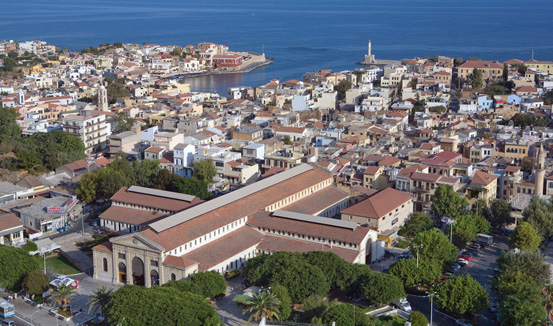
In the old city of Chania you will find little shops with traditional products, while in the Municipal Market you can buy pure Cretan products or art crafts for souvenirs and presents for your friends. Olive oil, raki, honey, wine, cheese and aromatic herbs are products that one must carry back when leaving Chania. Don’t forget the handmade embroidery.
In the market of Chania you will also find numerous clothes shops, shoe shops, jewelry and more.
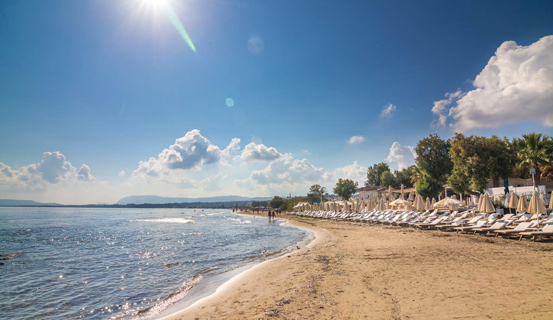
In Chania there are a lot of awarded, beautiful beaches with crystal clear water. You can find entertainment and enjoy water sports in a lot of them but you can also find quiet beaches, ideal for families and also beaches for nudists. Some of the most beautiful beaches are:
Chrisi Akti, which is in Chania. You will be impressed by the golden sand. There are beach chairs and a playground so it is ideal for families.
The organized beaches in Platania (10km away from Chania) and Agia Marina (5km away from Chania) are suitable for those who seek for entertainment along with swimming since there are lots of beach bars.
If you love water sports, Marathi beach (16km away from Chania) is the place for you, while in the clear blue water in Palaiohora you can try wind surfing and kite surfing although it is a bit farther from Chania.
Falasarna beach, 50km west of Chania has been awarded in the past as the most beautiful beach in Crete. It is included in the best beaches in Europe as it has amazing white sand and warm crystal water.
You will definitely love the exotic beach of Elafonisi. Elafonisi is in the southeastern part of Chania prefecture, about 75km from the city.
A day trip in Gavdos, the small island opposite Sfakia is really worth it. Its majestic beaches and its unspoiled surroundings will capture your heart.
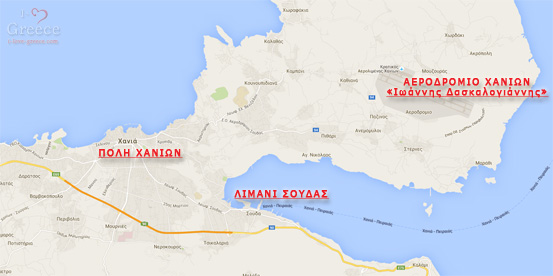
You can travel to Chania either by plane or ship. Reaching “Ioannis Daskalogiannis” airport you need 20 minutes to arrive in Chania. If you like voyages you can go to the harbor of Souda where there are daily routes from and to Piraeus as well as other Greek harbors.
You can rent a car or a motorcycle for your transportation in the city. If you wish for a romantic stroll you should prefer a carriage which you can find waiting for you in the old harbor. The urban and intercity transport network of Chania accommodates passengers for routes within the city limits as well as for the other districts of Crete.












